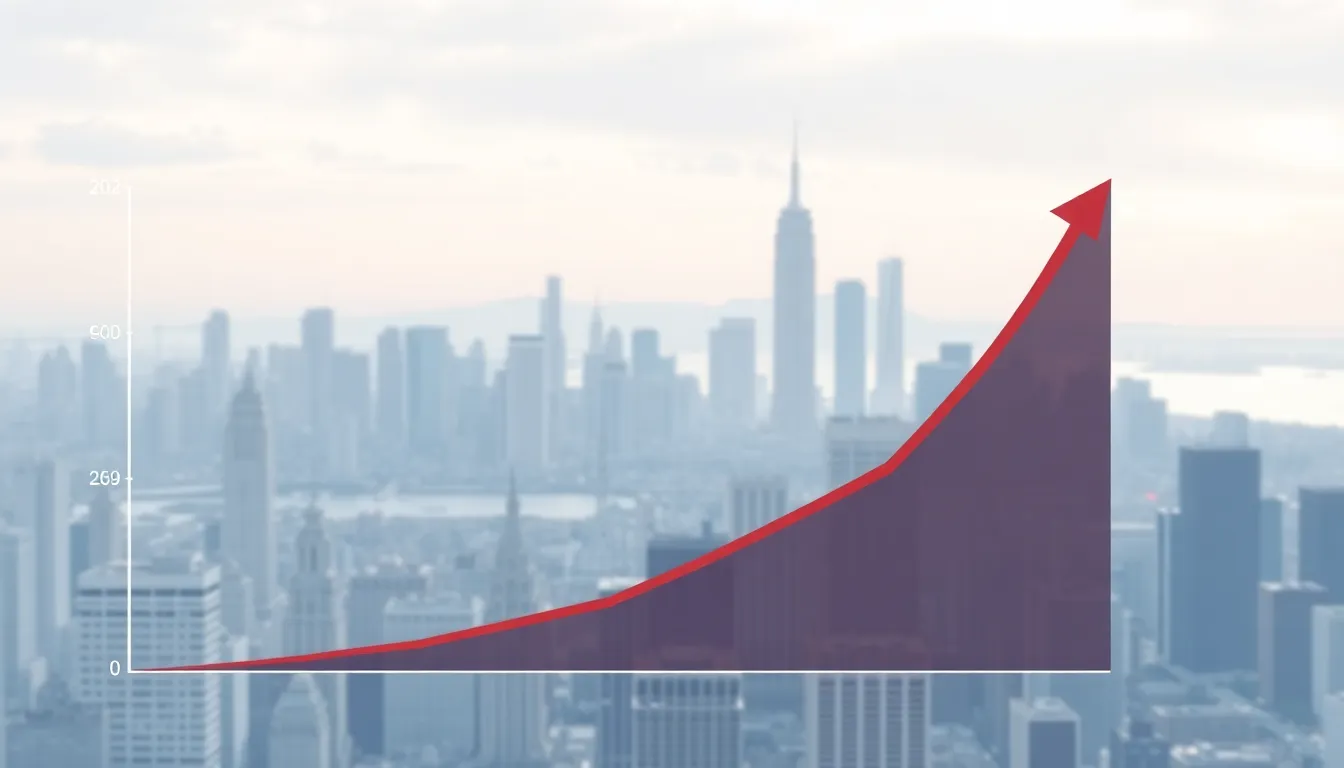When it comes to the USA’s economy, it’s a wild ride that can leave even the most seasoned investors feeling a bit dizzy. Picture a rollercoaster: thrilling highs, gut-wrenching drops, and the occasional loop-de-loop that makes you question your life choices. From tech giants in Silicon Valley to bustling factories in the Midwest, the landscape is as diverse as its people.
Table of Contents
ToggleOverview of the USA Wirtschaft
The USA economy exhibits significant dynamism, characterized by its resilience and adaptability. Various sectors contribute to this economic landscape, including technology, finance, healthcare, and agriculture. In Silicon Valley, innovation thrives as tech companies push the boundaries of artificial intelligence and software development. Meanwhile, the Midwest remains a crucial manufacturing center, producing automobiles and industrial machinery.
Employment opportunities reflect this diversity, with the service sector employing around 80% of the workforce. This sector encompasses jobs in retail, healthcare, and education, indicating strong consumer demand. Agriculture, while a smaller portion of the economy, plays a vital role in global food supply, with the United States ranking among the top producers of corn, soybeans, and wheat.
Investment patterns show fluctuations influenced by both domestic and international factors. Rising interest rates often affect borrowing costs for businesses, impacting expansion plans and consumer spending. Stock market performance can vary significantly based on investor sentiment and economic indicators, such as unemployment rates and gross domestic product growth.
Trade relations shape the economic landscape, with the USA engaged in numerous agreements that promote exports and imports. China, Canada, and Mexico rank among the largest trading partners, emphasizing the importance of international commerce. Policy changes can alter trade dynamics, leading to adjustments in tariffs and regulations that have immediate effects on various industries.
Economic forecasts suggest that adaptability remains essential for ongoing growth. In light of global challenges, businesses must continue to innovate and evolve. Understanding these dynamics provides a clearer picture of the USA’s economic trajectory and the factors influencing its future.
Key Economic Indicators

Key economic indicators provide insight into the health of the USA’s economy. Understanding metrics such as GDP growth rate and unemployment rate offers crucial information for investors and policymakers.
GDP Growth Rate
GDP growth rate reflects the overall economic performance of a country. In the U.S., the GDP growth rate fluctuates, typically around 2% to 3% annually. This rate indicates economic expansion or contraction and influences investment decisions. For instance, the GDP growth rate surged to an estimated 6.4% in Q1 2021, showcasing a recovery phase post-pandemic. Investors monitor this indicator closely, as a rising growth rate often leads to increased consumer spending and business investments. Additionally, the U.S. economy’s diverse sectors contribute to growth, particularly in technology and services.
Unemployment Rate
Unemployment rate serves as a vital measure of job market conditions. The U.S. unemployment rate stood at 4.2% in November 2021, showing the effects of labor market recovery. Variations in this rate signal shifts in economic health and can impact consumer confidence. A lower unemployment rate usually correlates with stronger economic conditions, promoting increased spending and investment. Factors such as seasonal employment trends and policy changes also influence this metric. Thus, businesses and economists analyze employment data to gauge potential market opportunities and risks.
Major Sectors of the Economy
The economy of the USA is diverse, with major sectors driving growth and innovation. Key areas include technology, healthcare, and manufacturing.
Technology
Tech companies are at the forefront of the U.S. economy. In Silicon Valley, startups and established firms focus on artificial intelligence, cloud computing, and software development, pushing boundaries and driving productivity. Employment in tech reaches millions, supporting a robust job market. Investments in research and development amount to billions annually, indicating strong future growth. Disruptive innovations, such as electric vehicles and smart home devices, reshape consumer behaviors and industries alike.
Healthcare
Healthcare remains a critical sector, employing over 18 million people in the U.S. The system is characterized by a mix of public and private providers, offering a wide range of services. Notably, spending in healthcare exceeds $4 trillion, representing a significant portion of GDP. Innovations in pharmaceuticals and biotechnology lead to advancements in patient care. Telehealth has gained momentum, providing accessible healthcare solutions, particularly during the pandemic. Overall, healthcare is vital for both economic stability and the well-being of the population.
Manufacturing
Manufacturing plays an essential role in the U.S. economy, contributing about $2.3 trillion annually. It encompasses industries such as automotive, aerospace, and consumer goods. The Midwest remains a hub for production, with significant employment opportunities. Productivity gains, driven by technology, enhance efficiency in this sector. Exports of manufactured goods account for a considerable share of trade, affirming the sector’s global impact. Continuous investments in modernization ensure that U.S. manufacturers remain competitive on the world stage.
Trade and Investment
Trade and investment play crucial roles in shaping the USA’s economic landscape, as the country engages in robust import and export activities and attracts significant foreign direct investment.
Import and Export Trends
Imports and exports demonstrate dynamic trends in the U.S. economy. In 2021, total exports reached approximately $2.5 trillion, while imports totaled around $3.1 trillion, leading to a trade deficit of about $600 billion. Key exports include machinery, electrical equipment, and aircraft, with major trade partners like Canada, Mexico, and China driving significant exchange. The agricultural export sector remains vital, with the U.S. being one of the largest exporters of corn, soybeans, and wheat, supporting the global food supply. These trends highlight the intricate balance between goods entering and leaving the country, reflecting the changing demands of global markets.
Foreign Direct Investment
Foreign direct investment significantly impacts the U.S. economy, enhancing growth and job creation. In 2020, foreign investment into the U.S. reached nearly $4 trillion, with sectors such as technology, real estate, and manufacturing attracting the most interest. Europe stands as the largest source of foreign investment, followed closely by Canada and Asia. Companies invest to capitalize on the U.S. market’s innovative potential, skilled workforce, and reliable legal framework. Such investments foster collaboration and exchange, ultimately contributing to a more diverse economic landscape that benefits both domestic and foreign entities.
Economic Challenges
Economic challenges continue to shape the USA’s financial landscape. These obstacles influence growth, stability, and equity across various sectors.
Income Inequality
Income inequality represents a significant issue within the USA economy. Nearly 40% of wealth is concentrated among the top 1%, illustrating the gap between the wealthy and the rest. This disparity affects consumer spending, as lower-income households typically have reduced purchasing power. Furthermore, educational and employment opportunities often vary, limiting upward mobility for many individuals. Addressing this challenge requires targeted policies to enhance workforce skills and expand access to quality education.
Inflation Concerns
Inflation remains a pressing concern for the USA economy, particularly since 2021. The Consumer Price Index surged by 5.4% year-over-year, marking the highest increase since 2008. Rising costs impact households, increasing prices for essential goods and services like food, energy, and housing. Continued inflation pressures may lead to changes in Federal Reserve policies, potentially impacting interest rates and consumer borrowing. Monitoring inflation trends is essential for businesses and policymakers to develop strategies that mitigate its effects on the economy and maintain stability.
The USA’s economy remains a complex and dynamic entity that continues to evolve. Its ability to adapt to challenges while fostering innovation across various sectors sets it apart on the global stage. As the nation navigates issues like income inequality and inflation, the resilience of its workforce and industries will be crucial for future growth.
Investors and policymakers alike must stay informed about the shifting landscape to make strategic decisions. The interplay between trade relations and domestic economic indicators will shape the trajectory of the economy in the coming years. Ultimately, embracing innovation and adaptability will be key to unlocking new opportunities and driving sustainable growth.








